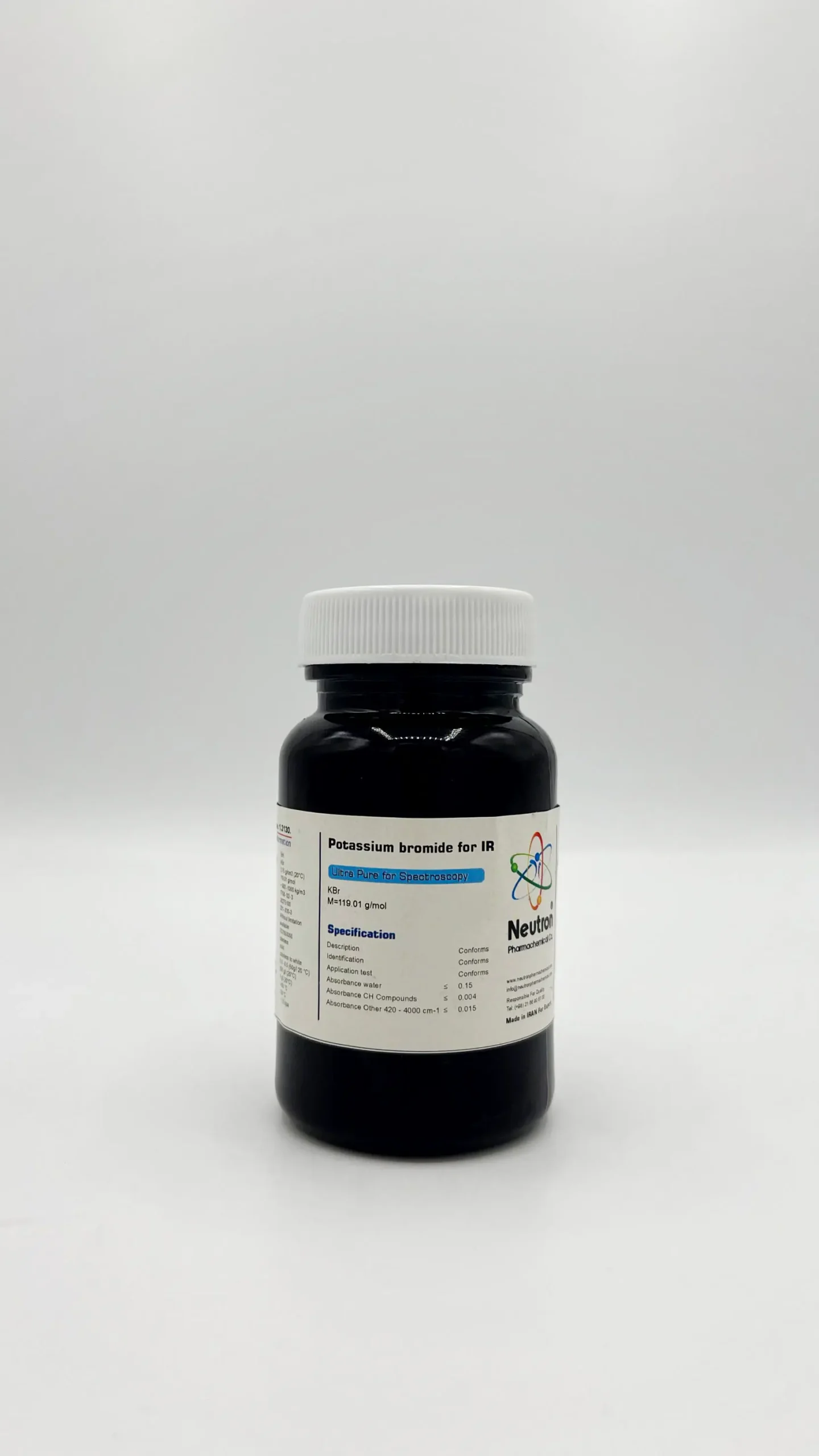بروماید پتاسیمIR
| Formula | BrK |
| Chemical formula | KBr |
| Density | 2.75 g/cm3 (20°C) |
| Molar mass | 119.01 g/mol |
| Bulk density | ~ 900 -1000 kg/m3 |
| CAS number | 03/02/7758 |
| HS Code | 28275100 |
| EC number | 231- 830-3 |
| Storage | Without limitation |
| SDS | available |
| RTECS | TS7650000 |
| Odour | oderless |
| Form | solid |
| Color | colorless to white |
| p H | 5.5 – 8.5 (50g/l 20 °C) |
| Solubility in water | 650 g/l (20°C) |
| Solubility in ethanol | 4 g/l (20°C) |
| Boiling point | 1435 °C |
| Melting point | 730 °C |
| Vapour pressure | ~ 1.3 hpa |
| Description | Conforms | ||
| Identification | Conforms | ||
| Application test | Conforms | ||
| Absorbance water | ≤ | 0.15 | |
| Absorbance CH Compounds | ≤ | 0.004 | |
| Absorbance Other 420 – 4000 cm-1 | ≤ | 0.015 |
Potassium Bromide (KBr) is a high-purity, crystalline salt widely used as a matrix material and optical medium in infrared (IR) spectroscopy and analytical applications.
🏭⚗️ Production
KBr is produced through the neutralization of high-purity potassium hydroxide or carbonate with hydrobromic acid, followed by recrystallization and drying under controlled conditions to remove moisture and impurities. The salt is then ground and packaged in sealed, moisture-resistant containers to maintain its anhydrous quality and optical clarity.
🔬 Properties
Potassium bromide is a colorless to white crystalline solid, odorless, and highly hygroscopic. It has a high melting point, excellent optical transparency in the infrared region (4000–400 cm⁻¹), and is insoluble in most organic solvents but soluble in water. Its optical and chemical stability make it ideal for IR spectroscopy applications, particularly for preparing transparent sample pellets.
🧪 Applications
KBr is primarily used in IR spectroscopy as a transparent matrix material for solid sample preparation. Finely ground samples are mixed with dry KBr powder and compressed into pellets for transmission IR analysis. It is also employed in optical components such as windows and prisms due to its excellent infrared transmission properties.
⚠️ Safety
KBr is generally considered low in toxicity but should be handled with clean, dry tools to prevent contamination and moisture absorption. Prolonged exposure to humidity can affect spectral quality. Handling should be done with gloves and protective eyewear, and the material should be stored tightly sealed in a desiccator. Waste must be disposed of in accordance with laboratory chemical disposal regulations.


